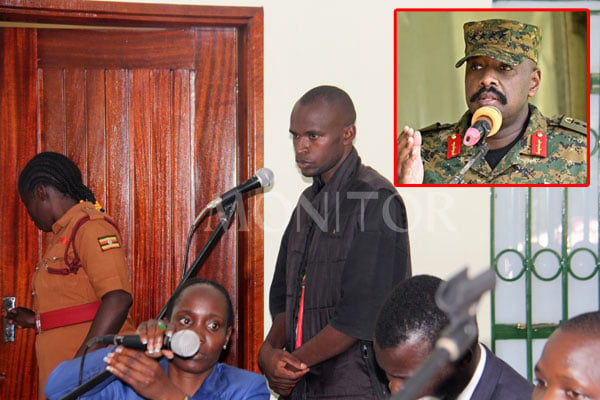Prime
Works on Kabaale airport at 70% - contractor

Construction of the concrete box channel along the taxilane Kabaale International Airport in Hoima District. PHOTO | courtesy
What you need to know:
A number of infrastructure projects are being worked on in the Albertine region in preparation for first oil in 2025. Of course, some of them are supportive projects but very important in regard to realising Uganda’s dream to commercial oil production. One such project is Kabaale International Airport in Hoima District, which the contractor says is currently 70 percent complete. Gerald Ekinu, the Kabaale International Airport contract manager, spoke to Betty Ndagire on actual works, progress and more.
How far with construction works?
So far, as of December 2021, we were at between 67 and 70 percent for physical works. In terms of time, so far, 76 percent of the contract period has elapsed.
When should we expect works to be completed? Do you have a time frame?
The contract has a total of 1,767 days. We have so far utilised 1,354. In terms of financial progress, we have covered 72.79 per cent of the financing paid out for different project works.
We have a project scope which we are following and so far, we have completed some works. When you look at the airstrip, cut and fill is at 100 percent, backfill at 98 percent, subbase course at 90 percent, base course at 90 percent and capping layer is about 94 percent.
We have also completed the box culvert. This is supposed to drain water downwards to avoid flooding.
We have also completed an access road from the main site to the quarry. All these are significant works.
So, we should hope that the project will be completed soon?
We started this project on April 18, 2018. As I have told you, works had reached about 70 percent by December last year. When you consider all what is left, we hope to have completed by at least February 2023.
We have been delayed a bit by Covid-19 and weather disruptions. Our hope is that the weather or any other condition does not disrupt us to warrant an extension.
What is still missing?
The drainage is 62 percent complete, bituminous layers and seals are at around 50 percent while works on cabling chambers and duts is still low – at 10 per cent.
The airport ground lighting substation is at 30 per cent, landside roads and parking at 13 percent while works on concrete pavements are ongoing.
Works on cement treated course, base course and the airfield rescue and fire fighting building are ongoing in addition to works on the main substation building.
Works Ministry recently raised the issue of inadequate land being allocated for the airport to Parliament. How have you handled this?
It was sorted. We needed additional land of about 0.14 kilometres to build a passenger terminal, expand the cargo terminal and building a parallel taxiway, apron for general aviation aircrafts and cold storage.
Land is no longer our challenge, our challenge now is funds to complete all the works. It is about €77m (Shs310b).

Works on the rigid pavement at the Kabaale International Airport in Hoima District .
What sort of airport are we looking at?
In the long-term, this will be an international airport. However, what we are building now is to specifically facilitate development of the oil sector.
Of course, it will have the ability to accommodate large airplanes with carriage of up to 100 tonnes while also accommodating takeoffs of at least 3,500 metres or 3.5 kilometres.
In this phase we are looking at accommodating the huge airplanes that will be ferrying machinery and equipment for development of the refinery.
However, in the second phase, we shall embark on building an alternative international airport to Entebbe.
What economic prospects are we looking at here?
Easing transporting of exports and promotion of tourism is a key driver beyond supporting creation of a sustainable oil sector.
Whereas these are at the core of our programmes, of course, the airport shall have passenger services.
However, for now, we are looking at cargo supplemented by a limited number of passenger arrivals.
Our hope is that as cargo grows, the number of passengers will also grow thus necessitating required expansions.
Could you tell us about the business case.
In terms of business projections, we have staggered them. The airport will continue to be developed as a business as the economy gains momentum.
The airport will also create jobs at regional and local level and will as well promote industrialisation, leisure and hospitality and entertainment.
So far we have about 874 employees, 778 of which are males while only 96 are female and only 14 are expatriates.
Challenges
Have you encountered any challenges so far?
Yes! Just like any other project you will have challenges. Our number one challenge has been Covid-19. That is why our actual progress is far from where we had planned to be. The variance is at around 11 percent.
You realise that during the lockdown, movement was restricted. So, we had to do a lot of internal management including stopping some people to manage required numbers.
The other challenge has been the weather. We have at different intervals had to navigate through weather conditions that cannot allow us to work on things such as earth works. This makes our work very difficult because much of what we are doing, involves deeper excavation and earth works.
Beyond this, funding has been irregular. We have depended so much on supplementary budgets here and there while also being on the outlook for external disruptions that are sometimes beyond our control.





